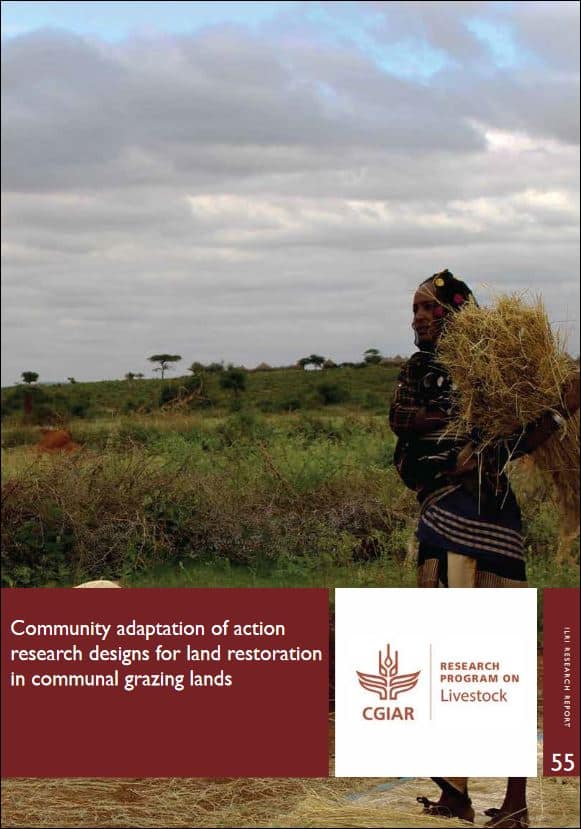By Nganga, Irene N.; Temesgen, Tamene and Sircely, Jason A.
vCommunity adaptation of action research designs for land restoration in communal grazing lands AbstractLand restoration provides corrective measures which improve and restore productivity of agricultural ecosystems. This study collected data from four sites using focus group discussions. These sites were Amhara and Borana in Ethiopia and Kajiado and Wajir in Kenya. Data collected were on livestock holdings, feed basket and preferred feed species.Pearson correlation was used to establish the relationship between the total number of livestock units and the size of cropland used by households among communities. On a site-by-site basis, the Amhara site yielded a positive significant relationship, Wajir showed an insignificant positive association and the Borana site demonstrated an insignificant negative association. In Kajiado, no correlation was established. Crop residue was the predominant source of feed in Amhara. The dominant feed source for Borana, Kajiado and Wajir was open grazing and browsing. The plant genera that were preferred in more than one of the four sites were Cynodon spp., Sporobolus spp, Chrysopogon spp and Pennisetum spp. Based on the data collected and the biophysical differences of the sites, various land restoration trials were developed, each using a different protocol customized to fit the management goals of each site. Adaptation data was used to design restoration action research trials: (i) improved forage grasses were planted and weeding was done in exclosures in Amhara;; (ii) land was placed under partial resting/grazing termed ‘communal kallo’ in Borana and (iii) low-cost (short resting) and higher-cost (reseeding) restoration options were tested in Kajiado and Wajir.
![]()

